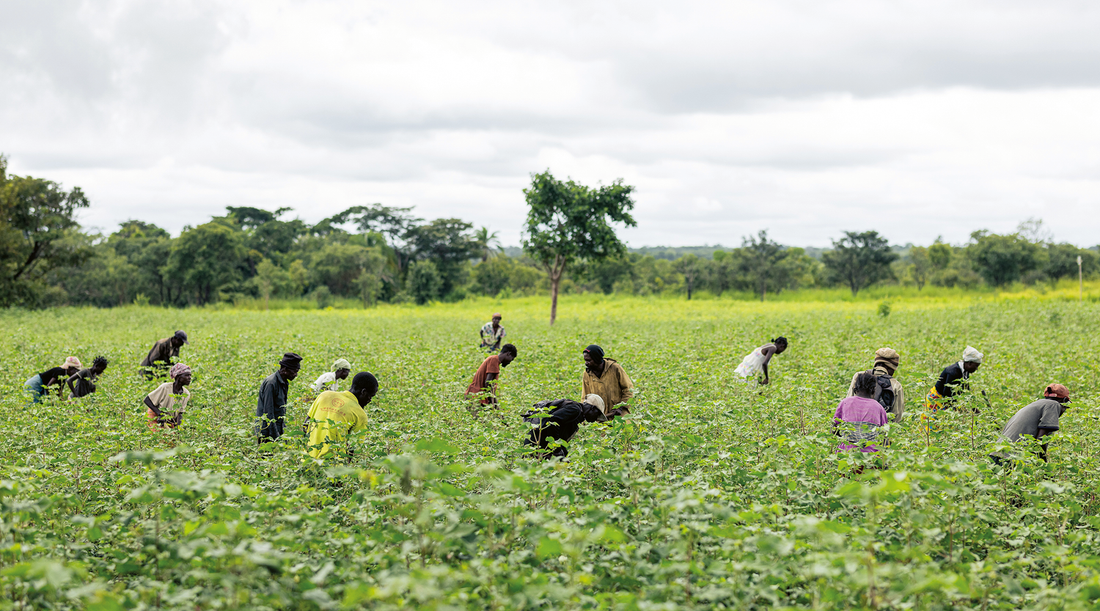
AGRI CARRIAGE - The silent revolution that comes from the land: How agriculture is transforming the interior of Angola
Share
Behind the record harvests and renewed hope in the Angolan countryside lies an innovative system with its own name and identity. More than an agricultural solution, it's a structured response to decades of neglect of rural potential. It's proof that Angola can reinvent itself from its roots.

For years, the interior of Angola was synonymous with abandonment. Fertile soil, but helpless hands. Millions of peasants subsisted on the bare minimum, isolated from public policies, credit, or technology. This scenario is beginning to change with the emergence of an organized force operating silently, an agricultural development system that restores dignity and a future to rural producers.
It's a model of structural and social transformation based on four pillars: technical assistance, adapted rural credit, affordable agricultural insurance, and guaranteed market access. It's an ecosystem that connects family farming to the national economy and the country's food security.
The model is neither imported nor improvised. It is the result of in-depth diagnostics of the Angolan agricultural sector. Historical flaws were identified: the collapse of cooperatives, lack of financing, price instability, technological deficiencies, and institutional isolation of rural producers. Based on this data, the model was tailored to Angola—focusing on local identity, but inspired by international best practices.
According to the FAO, more than 80% of the world's farms are family-owned, accounting for 70% of global food production. In Africa, this figure exceeds 60%. However, they operate under extreme vulnerability. Carrinho Agri emerges as a solid, scalable, and replicable alternative.

In the rural communities of seven Angolan provinces where it operates, change has faces and names. More than 800 agricultural extension workers travel long distances by motorcycle to be by the side of producers. They provide technical training, guidance, and, above all, respect. They speak local languages, understand cultural cycles, and become part of the communities where they work.
Complementing this workforce are more than 200 agricultural engineers, who introduce regenerative practices, analyze soils, adjust production schedules, and teach conservation techniques. These are Angolan and Brazilian professionals, supported by training programs from the IFC, an arm of the World Bank.
This support network forms a system of continuous learning. Farmers who were previously unfamiliar with the concept of soil pH now make decisions based on technical knowledge. The daily presence of technicians reduces dropout rates and promotes the involvement of producers as co-authors of their own transformation.
In Angola, only 15% of smallholder farmers have formal access to credit, even though the sector accounts for 60% of the workforce and 10% of GDP. The Bank of Commerce and Industry (BCI) breaks this barrier by implementing an inclusive credit system: producers receive inputs before harvest and pay later, with a portion of their production.
With no formal guarantees required and no exclusionary bureaucracy, credit is brokered by Carrinho Agri, which validates farmers' productive capacity. The model includes legal, administrative, fiscal, and financial support, promoting education on the responsible use of resources.

Default rates, which in conventional models exceed 30%, are below 10% here. Furthermore, the model is already beginning to scale to finance mechanization and infrastructure. Irrigation, greenhouses, and local storage are becoming part of the daily lives of small producers.
The countryside is unpredictable. Droughts, floods, pests—anything can ruin months of work. With the arrival of VIVA Seguros, Angolan farmers can now count on tailor-made agricultural insurance. It covers losses caused by bad weather quickly, using meteorological and satellite data to verify and trigger compensation.
The result is liberating: farmers stop planting only the basics out of fear and start investing in new crops and techniques. Insurance reduces the collective panic that affects many communities after poor harvests. With protection comes confidence. And with confidence comes innovation.

Carrinho Agri invests in the digitalization of family farming. Using georeferencing, each farmer and productive plot is registered, enabling monitoring, predictability, and planning. GPS platforms, weather forecasting tools, digital pest identification, and continuing education apps bring producers closer to agricultural intelligence—without the hassle.
Carrinho Agri's unique selling point is its complete cycle: what's planted is harvested, purchased, processed, and sold within a single ecosystem. Carrinho Indústria handles the processing, while the BB Eskebra chain of stores ensures the flow.
The internal data is compelling: integrated producers reported an average increase of over 35% in annual income, improvements in food security, greater financial inclusion and a strengthening of rural identity.
Contrary to what recent history would have it, Angola's progress isn't born solely from asphalt or large cities. It's emerging from the fields, from calloused hands, from ancestral knowledge meeting modern technology. Carrinho Agri plants more than food: it plants a new national imagination.
There, where the sun beats down and the hoe shines, the future is already sprouting. Silently, but with deep roots and robust promises.
